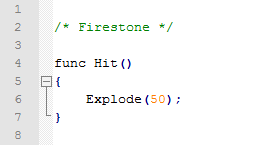C4Script Documentation: Difference between revisions
No edit summary |
|||
| Line 10: | Line 10: | ||
* [[Artists_Guide#Sounds_.26_Music|Sounds and music]] - Include sound effects and music into the game | * [[Artists_Guide#Sounds_.26_Music|Sounds and music]] - Include sound effects and music into the game | ||
* [[Content Developers Guide|Game content]] - including creating objects, scenarios and campaigns with C4Script | * [[Content Developers Guide|Game content]] - including creating objects, scenarios and campaigns with C4Script | ||
* [[ | * [[Git Workflow]] - How to use our repository | ||
* [[Developers Guide]] - For engine developers | * [[Developers Guide]] - For engine developers | ||
Revision as of 18:04, 22 January 2013

Like the previous Clonk titles, OpenClonk offers countless possibilites to create your own scenarios, objects and campaigns. Since Clonk 4, one of Clonk's most remarkable features has been it's extensibility. The complete content is scripted in C4Script, Clonk's own powerful scripting language, has been developed further since 1998. Now, it feels pretty much like a typical C-style scripting language. If you know other programming languages, you will have no problem to familarize yourself with C4Script and if you never programmed before, it can be a good introduction and practice to programming.
Everything about C4Script and the game data is documented in our C4Script Documentation.
You may want to download the latest game data first before you add or edit any game content. See the nightly builds page for the most current builds.
Further links
- Graphics - Render and texture 3D-models
- Sounds and music - Include sound effects and music into the game
- Game content - including creating objects, scenarios and campaigns with C4Script
- Git Workflow - How to use our repository
- Developers Guide - For engine developers
